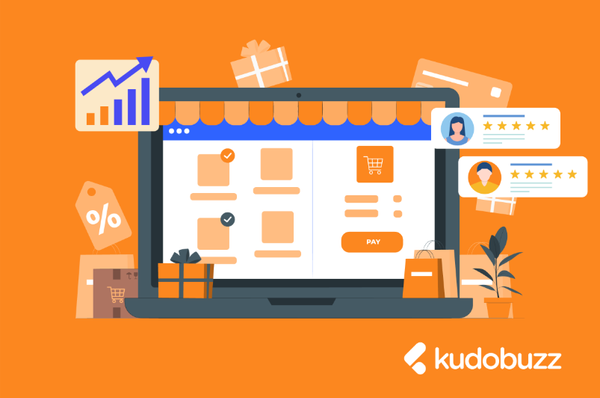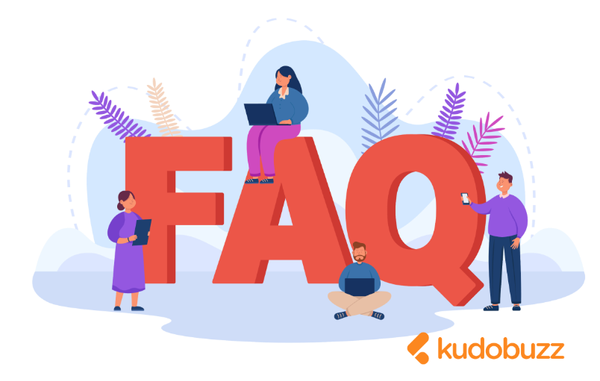There's more to eCommerce than just having an online store and letting the money roll in. After all, it is a business, and every successful business has a solid pricing strategy to originate from.
Proper product pricing is the make-or-break factor for your eCommerce business in today's competitive market with unprecedented access to global consumer markets.
If you're just starting out as an online retailer and don't have much experience in pricing products, however, never fear: we've compiled the ultimate guide to product pricing that will help set you up for long-term eCommerce business success.
Why Is Product Pricing Essential In eCommerce?
In eCommerce, as in any other business, it's essential to price your products to make a profit while still being competitive. Research shows that 68% of shoppers online will do a quick Google search for the best product before making a purchase - so having a competitive price is key.
There's no one-size-fits-all answer to the question of how to price your products, but there are a few key things to consider when setting prices:
Your Costs: What costs do you incur when producing and selling your product?
Your Margin: How much profit do you want to make on each sale?
Competition: What are your competitors charging for similar products?
Demand: How much demand is there for your product?
Shipping Costs: If you're shipping products to customers, what are the associated costs?
Customer Preferences: What kind of customer are you targeting, and what's important to them?
Budget: How much money can you invest in your inventory at a time?
These elements will help you price your products so that they're both fair for consumers and profitable for the business.
How To Price Your eCommerce Products
Now that you understand the basics of product pricing, it's time to get down to the details. With 2.4 billion individuals choosing to buy from eCommerce sellers first, there is plenty of money to be made for strategic sellers.
Every eCommerce business needs a strategy for how they price their products, so you should follow these steps when calibrating your pricing:
Step 1: Decide On Your Product Pricing Model
There are two main ways that online retailers can sell their products, each with different benefits and drawbacks. To maximize profits while still being competitive, it's essential to choose the pricing model that's best suited for your business and products:
Fixed Price:
Retailers sell their products at a set price regardless of customer demand or competition with a fixed price. This can be a good strategy if you have high production costs or want to maintain a certain profit margin on each sale.
Variable Price:
Retailers set different prices for their products based on demand with a variable price. This can be a good strategy if you want to increase profits by charging more for popular items.
For eCommerce businesses, it's usually best to go with a variable price model since you're able to increase your profits by charging more when demand is high. However, a fixed price model can be a good choice if you want to maintain a particular profit margin on each sale.
Step 2: Calculate Your Product Costs
Before you can set a price for your products, you need to know how much it costs to produce and sell them. This includes the cost of the materials used in production, shipping costs, and any other specific costs for your eCommerce business.
It's essential to keep in mind how much profit you want to make on each sale, too. Since product prices are variable, it can be challenging to calculate exact production costs, but there are a few strategies you can use for getting an estimate:
Competitive Advantage Pricing Method
This pricing strategy is based on your assumption that customers are willing to pay a certain price for your product because it's better than the competition. You first need to research what similar products are being sold for and then set your price above that amount to use this method.
Cost-Based Pricing Method
With this pricing strategy, you calculate how much it costs to produce your product and then add on a specific amount of profit. This is a suitable method if you already have estimates for how much it costs to produce each product.
Step 3: Calculate Your Profit Margin
Once you know how much your products cost, you can decide how much profit margin you want on each sale.
To increase profits, it's a good idea to set your margin at least 50% of the cost of the product. This will ensure that you're making a good profit on each sale while still being competitive.
Step 4: Set Your Product Prices
Now that you have all the information you need, it's time to set your product prices. Whether you choose a fixed or variable price model, this step is the same:
Add up all of your costs (production and shipping), and then add on your desired profit margin percentage to get your total product cost.
Next, decide whether you want to set a fixed or variable price for your products. If you choose a fixed price, add your total product cost to the desired profit margin to get your final selling price.
If you choose a variable price, multiply your total product cost by your desired margin percentage and then add that amount to the final selling price.
How Much Should You Charge for Shipping?
Now that you have all the information you need to price your eCommerce products before launching your online store, it's time to think about how much you should charge for shipping.
In some cases, it can be beneficial to offer free shipping on your products since this will help you increase sales and build a better relationship with customers.
Since shipping costs can vary depending on the customer's location and what's being shipped, a fixed shipping cost might work best. You can offer this service through a third-party shipping service or simply include it in your product cost.
Step 5: Monitor Your Inventory and Adjust Prices as Needed
Now that you've set prices for all of your products, it's essential to monitor how many items are selling and adjust the price accordingly.
Since different products sell at different rates, you might need to adjust your prices daily or weekly in order to maximize sales and profits.
If certain products aren't selling well, you can reduce their price until they're back on track. Depending on the industry you're in, you might also need to continuously monitor your costs and increase your prices if production costs rise.
Stay Proactive for eCommerce Pricing Success
It's no secret that online shoppers expect - and want - to find great deals when shopping for products, especially with the rise of price comparison tools like Google Shopping.
However, this shouldn't mean that you always have to sell your products at a discount to stay competitive. In fact, following these pricing strategies can help you increase profits while still being price competitive.
To stay ahead of the competition, it's essential to be proactive about your pricing and constantly adjust your prices as needed. This way, you can ensure that you're making a good profit on each sale while still providing customers with the products they want.
Now that you know how to price your eCommerce products before launching your online store, it's time to put these tips into practice. By following these simple steps, you can set your prices and increase profits while keeping customers happy.









